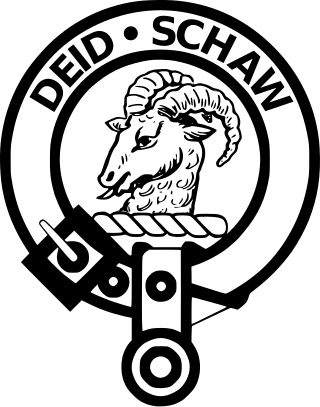Related Research Articles

The Declaration of Arbroath is the name usually given to a letter, dated 6 April 1320 at Arbroath, written by Scottish barons and addressed to Pope John XXII. It constituted King Robert I's response to his excommunication for disobeying the pope's demand in 1317 for a truce in the First War of Scottish Independence. The letter asserted the antiquity of the independence of the Kingdom of Scotland, denouncing English attempts to subjugate it.

The Wars of Scottish Independence were a series of military campaigns fought between the Kingdom of Scotland and the Kingdom of England in the late 13th and 14th centuries.

Earl of Elgin is a title in the Peerage of Scotland, created in 1633 for Thomas Bruce, 3rd Lord Kinloss. He was later created Baron Bruce, of Whorlton in the County of York, in the Peerage of England on 30 July 1641. The Earl of Elgin is the hereditary Clan Chief of Clan Bruce.

Lord Lovat is a title of the rank Lord of Parliament in the Peerage of Scotland. It was created in 1458 for Hugh Fraser by summoning him to the Scottish Parliament as Lord Fraser of Lovat, although the holder is referred to simply as Lord Lovat. It was a separate title from the Scottish feudal lordship of Lovat, already held by the highland Frasers. In 1837 they were created a third title, Baron Lovat, of Lovat in the County of Inverness, in the Peerage of the United Kingdom. The holder is separately and independently the Chief of the highland Clan Fraser of Lovat.
Andrew Moray, also known as Andrew de Moray, Andrew of Moray, or Andrew Murray, was a Scottish esquire. He first rose to prominence during the First Scottish War of Independence, initially raising a small band of supporters at Avoch Castle in early summer 1297 to fight King Edward I of England. He soon had successfully regained control of the north for the absent Scots king, John Balliol. Moray subsequently merged his army with that of William Wallace, and jointly led the combined army to victory at the Battle of Stirling Bridge on 11 September 1297. He was severely wounded in that battle, dying at an unknown date and place that year.

The Clan Ruthven is a Lowland Scottish clan.

Baron Wake of Liddell is an abeyant title in the Peerage of England. It was created in 1295 for John Wake. It has been in abeyance since 1408.

Major General Simon Joseph Fraser, 14th Lord Lovat and 3rd Baron Lovat, was a Scottish aristocrat, British Army officer, landowner, politician and the 23rd Chief of Clan Fraser of Lovat.
Malise III of Strathearn was a Scottish nobleman, the ruler of the region of Strathearn.

Sir Simon Fraser of Oliver and Neidpath was a Scottish knight who fought in the Wars of Scottish Independence, for which he was hanged, drawn, and quartered in 1306.

Sir William Douglas "le Hardi", Lord of Douglas was a Scottish nobleman and soldier.

Sir William Oliphant, Lord of Aberdalgie and Dupplin, was a Scottish magnate, knight and leader during the Wars of Scottish Independence.
Sir William Keith of Galston was a Scottish Knight who fought in the Wars of Scottish Independence. He brought the bones and heart of James Douglas, as well as King Robert I of Scotland's heart, back to Scotland after Douglas was killed on crusade in Spain.

John Wake, 1st Baron Wake of Liddell was an English nobleman and soldier. He was one of the first barons created by writ of summons to Parliament in 1295 by King Edward I.

Sir Alexander Lindsay, Lord of Barnweill, Byres and Crawford, also known as Alexander de Lindsay, was a Scottish noble.

Sir Patrick de Graham, Lord of Kincardine was a 13th-century Scottish noble and soldier.
Sir David de Graham of Dundaff was a 13th-century Scottish noble.
Sir David de Graham of Kincardine was a 13th-14th century Scottish noble.
Events from the 1290s in Scotland.
References
- Burke, Bernard (1885), Burke's Genealogical and Heraldic History of the Peerage, Baronetage and Knightage, United Kingdom: Burke's Peerage Limited
- McAndrew, Bruce A.. Scotland's Historic Heraldry. United Kingdom, Boydell Press, 2006.